-
 Bitcoin
Bitcoin $76,343.5966
-4.31% -
 Ethereum
Ethereum $1,454.0413
-8.00% -
 Tether USDt
Tether USDt $0.9991
-0.04% -
 XRP
XRP $1.7828
-7.91% -
 BNB
BNB $553.8873
-0.82% -
 USDC
USDC $1.0000
0.00% -
 Solana
Solana $104.8720
-3.94% -
 TRON
TRON $0.2302
0.67% -
 Dogecoin
Dogecoin $0.1416
-6.71% -
 Cardano
Cardano $0.5546
-6.43% -
 UNUS SED LEO
UNUS SED LEO $8.9909
1.00% -
 Toncoin
Toncoin $2.9762
-5.33% -
 Chainlink
Chainlink $10.8115
-7.01% -
 Stellar
Stellar $0.2204
-6.00% -
 Avalanche
Avalanche $15.9660
-5.37% -
 Sui
Sui $1.9482
-5.55% -
 Shiba Inu
Shiba Inu $0.0...01055
-8.53% -
 Hedera
Hedera $0.1471
-3.93% -
 MANTRA
MANTRA $6.1569
-2.04% -
 Dai
Dai $1.0001
0.01% -
 Bitcoin Cash
Bitcoin Cash $267.4871
-3.62% -
 Polkadot
Polkadot $3.3760
-7.32% -
 Litecoin
Litecoin $68.7761
-4.56% -
 Ethena USDe
Ethena USDe $0.9987
-0.01% -
 Bitget Token
Bitget Token $4.0123
-2.81% -
 Pi
Pi $0.5651
-5.06% -
 Hyperliquid
Hyperliquid $11.0565
-6.93% -
 Monero
Monero $196.2305
-3.25% -
 OKB
OKB $51.1707
-0.38% -
 Uniswap
Uniswap $4.7155
-9.14%
What is cross-chain technology? How does it achieve interoperability between different blockchains?
Cross-chain technology, using methods like atomic swaps and bridges, enables asset transfers between blockchains, boosting interoperability but presenting challenges in security, speed, and scalability depending on the chosen approach.
Mar 04, 2025 at 03:24 am
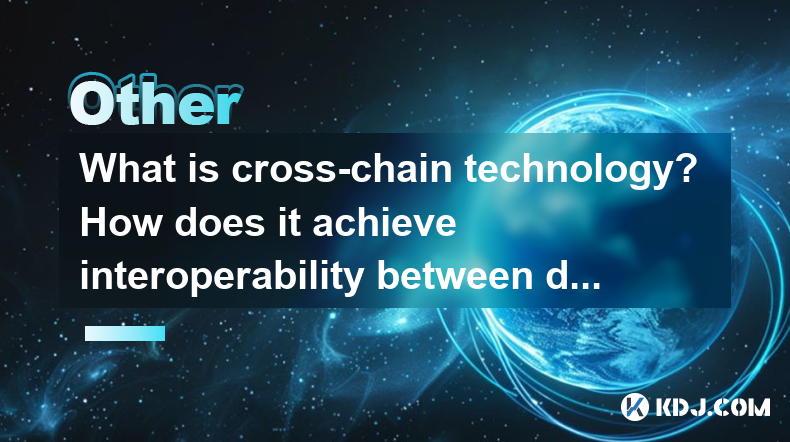
Key Points:
- Cross-chain technology facilitates communication and asset transfer between different blockchains.
- Interoperability is achieved through various methods, including atomic swaps, sidechains, and bridges.
- Each method has its strengths and weaknesses regarding speed, security, and scalability.
- Understanding the nuances of each approach is crucial for navigating the complexities of the decentralized ecosystem.
What is Cross-Chain Technology?
Cross-chain technology is a crucial development in the cryptocurrency space, addressing the inherent isolation of various blockchain networks. It aims to enable seamless interaction and asset transfer between different blockchains, breaking down the silos that have traditionally limited the potential of the decentralized world. This interoperability is essential for fostering collaboration, improving efficiency, and unlocking new possibilities within the crypto ecosystem. Without cross-chain solutions, each blockchain operates as an isolated island, limiting its potential for growth and integration.
How Does it Achieve Interoperability Between Different Blockchains?
Several methods enable cross-chain interoperability. Each approach tackles the challenge of transferring value and data securely and efficiently across disparate networks with varying consensus mechanisms and architectures. The selection of the most suitable method often depends on factors like security requirements, transaction speed, and the specific needs of the involved blockchains.
Atomic Swaps:
Atomic swaps allow for the direct exchange of cryptocurrencies between two different blockchains without the need for a third-party intermediary. This peer-to-peer approach enhances security and privacy. The transaction is atomic, meaning it either completes entirely or not at all, ensuring the integrity of the exchange. However, atomic swaps often require specific cryptographic protocols and might not be compatible with all blockchain types.
Sidechains:
Sidechains are separate blockchains pegged to a main blockchain. They offer a layer of scalability and flexibility without compromising the security of the main chain. Assets can be transferred between the main chain and the sidechain, allowing for faster transaction processing and potentially lower fees. However, managing the security and stability of the sidechain is crucial to avoid compromising the main chain.
Hash Time-Locked Contracts (HTLCs):
HTLCs are smart contracts that enable conditional payments across different blockchains. They are often used in atomic swaps to ensure that both parties receive their respective assets simultaneously, mitigating the risk of fraud. The implementation of HTLCs requires a thorough understanding of smart contract programming and careful consideration of potential vulnerabilities.
Bridges:
Bridges are intermediary protocols that facilitate the transfer of assets between blockchains. They often involve a trusted third party or a set of validators to ensure the security and integrity of the transfers. While bridges can offer greater compatibility with various blockchain types, they introduce a degree of trust in the intermediary, potentially compromising decentralization.
Relays:
Relays are another approach to cross-chain interoperability. They work by translating messages and data between different blockchains, enabling communication and interaction without direct asset transfers. This is often used for transmitting data, not necessarily value, between different networks.
Challenges and Considerations:
Developing robust cross-chain solutions presents several challenges. Security is paramount, as vulnerabilities can lead to significant financial losses. Scalability is another critical factor, as cross-chain transactions need to be efficient enough to handle high volumes of traffic. Maintaining compatibility with diverse blockchain architectures and consensus mechanisms adds complexity to the development process. Furthermore, regulatory compliance and legal frameworks related to cross-chain transactions are still evolving and require careful consideration.
Common Questions and Answers:
Q: Is cross-chain technology secure?
A: The security of cross-chain technology depends heavily on the specific method used. Atomic swaps are generally considered more secure due to their peer-to-peer nature, while bridges introduce some reliance on trusted intermediaries, which could present security risks. Each implementation needs a thorough security audit.
Q: How fast are cross-chain transactions?
A: Transaction speeds vary considerably depending on the method employed. Atomic swaps can be relatively slow, while bridges might offer faster transaction times but with potential trade-offs in terms of decentralization. Sidechains can also provide faster speeds but might need robust security mechanisms.
Q: What are the limitations of cross-chain technology?
A: Limitations include the complexity of development and implementation, the potential for security vulnerabilities, and the need for compatibility with different blockchain architectures and consensus mechanisms. Scalability issues can also arise with high transaction volumes.
Q: What are the benefits of cross-chain technology?
A: The primary benefit is interoperability, enabling communication and asset transfers between different blockchains. This unlocks greater collaboration, improves efficiency, and opens up new possibilities for innovation within the crypto ecosystem.
Q: What is the future of cross-chain technology?
A: The future of cross-chain technology is likely to involve continued innovation in various approaches, with a focus on improving security, scalability, and interoperability. Standardization efforts could play a significant role in promoting wider adoption and integration. The development of more sophisticated and efficient solutions will continue to shape the decentralized landscape.
Disclaimer:info@kdj.com
The information provided is not trading advice. kdj.com does not assume any responsibility for any investments made based on the information provided in this article. Cryptocurrencies are highly volatile and it is highly recommended that you invest with caution after thorough research!
If you believe that the content used on this website infringes your copyright, please contact us immediately (info@kdj.com) and we will delete it promptly.
- "Cardano (ADA) Price Could Dip Below $0.60, Following Previous Market Cycle"
- 2025-04-09 05:10:12
- BONK, the well-known meme coin, has risen over 35% in the last week, attracting meme coin investors in the market. So, what caused this rally?
- 2025-04-09 05:10:12
- Bitcoin (BTC) Investors May Not Exactly Feel It, but BTC Has Been a Relatively Good Bet
- 2025-04-09 05:05:12
- Donald's Bitcoin (DONBTC) Could Turn Early Investors into Multi-Millionaires, Like Shiba Inu (SHIB) and Dogecoin (DOGE) Did
- 2025-04-09 05:05:12
- 6 Upcoming Kraken Listings That Could Be the Next Big Thing in Crypto
- 2025-04-09 05:00:13
- COTI Unveils New Privacy-Focused Blockchain to Reshape Web3 Transactions
- 2025-04-09 05:00:13
Related knowledge

Is the ranking of Chinese blockchain apps real and reliable?
Apr 04,2025 at 09:01pm
The ranking of Chinese blockchain apps has become a topic of interest for many in the cryptocurrency community, as it provides insights into the popularity and adoption of blockchain technology within China. However, the reliability and authenticity of these rankings are often questioned. This article aims to delve into the factors that influence these ...
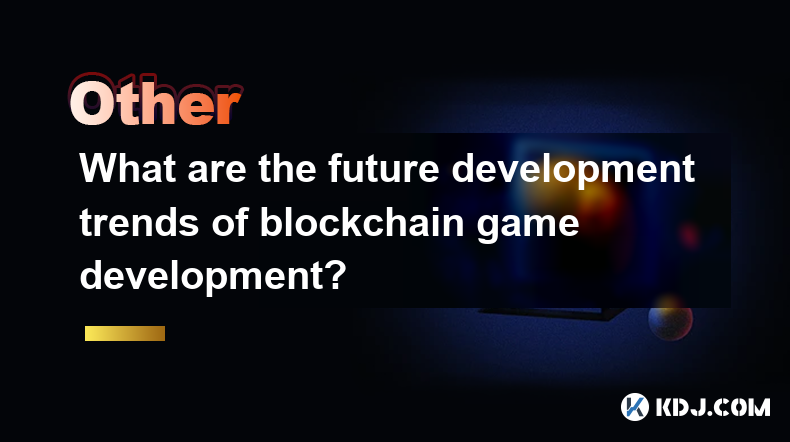
What are the future development trends of blockchain game development?
Apr 03,2025 at 05:00am
Blockchain technology has revolutionized various industries, and gaming is no exception. As we look to the future, several trends are set to shape the development of blockchain games. These trends not only promise to enhance the gaming experience but also to integrate blockchain technology more seamlessly into the gaming ecosystem. Let's explore these t...

What are the high-return opportunities for blockchain investments?
Apr 05,2025 at 02:35pm
Blockchain technology has revolutionized the financial world, offering numerous high-return investment opportunities. These opportunities span various sectors within the cryptocurrency ecosystem, including cryptocurrencies, decentralized finance (DeFi), non-fungible tokens (NFTs), and blockchain startups. Each of these areas presents unique risks and re...
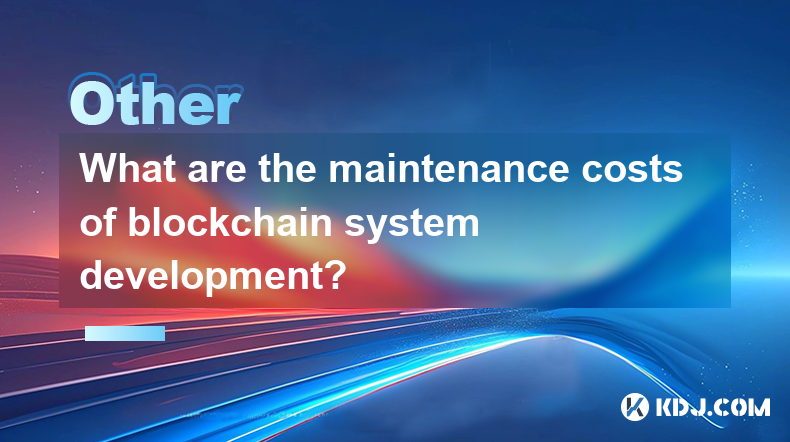
What are the maintenance costs of blockchain system development?
Apr 03,2025 at 06:07pm
The maintenance costs of blockchain system development are multifaceted and depend on various factors. These costs can include technical maintenance, security updates, infrastructure expenses, and personnel costs. Understanding these elements is crucial for anyone planning to develop or maintain a blockchain system. Technical MaintenanceTechnical mainte...
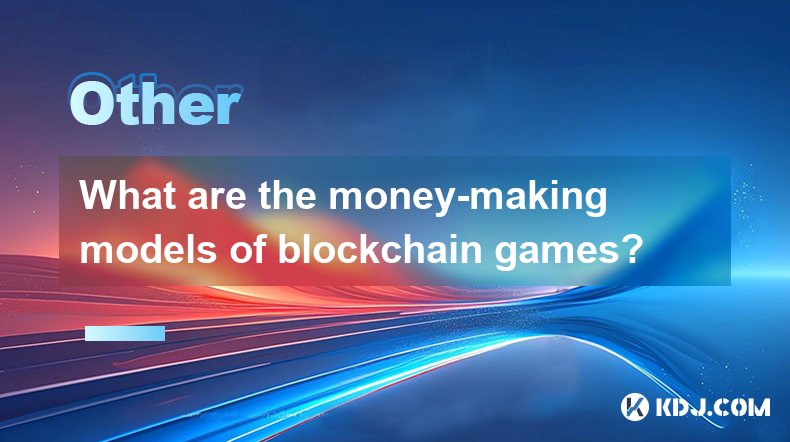
What are the money-making models of blockchain games?
Apr 04,2025 at 02:00pm
Blockchain games have emerged as a revolutionary way for players to earn real money while enjoying their favorite pastime. These games leverage the power of blockchain technology to create unique money-making models that benefit both the players and the developers. In this article, we will explore the various money-making models of blockchain games and ...
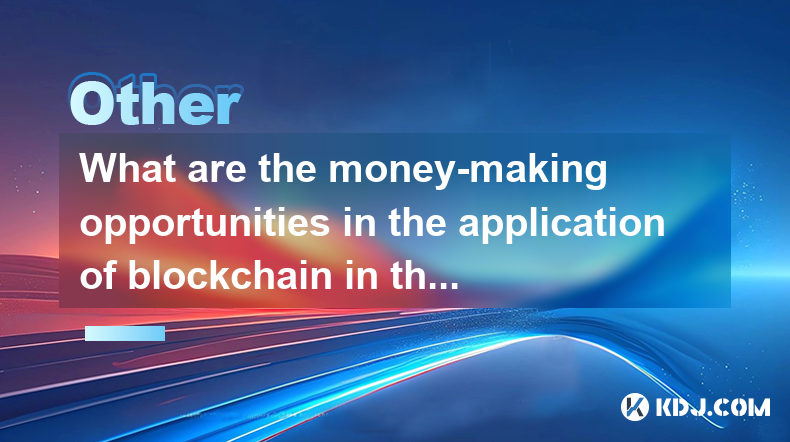
What are the money-making opportunities in the application of blockchain in the field of Internet of Things?
Apr 05,2025 at 10:35pm
The integration of blockchain technology with the Internet of Things (IoT) presents numerous money-making opportunities. Blockchain, with its decentralized and secure nature, can revolutionize how IoT devices interact, manage data, and conduct transactions. This article will explore various avenues where entrepreneurs, developers, and investors can capi...

Is the ranking of Chinese blockchain apps real and reliable?
Apr 04,2025 at 09:01pm
The ranking of Chinese blockchain apps has become a topic of interest for many in the cryptocurrency community, as it provides insights into the popularity and adoption of blockchain technology within China. However, the reliability and authenticity of these rankings are often questioned. This article aims to delve into the factors that influence these ...

What are the future development trends of blockchain game development?
Apr 03,2025 at 05:00am
Blockchain technology has revolutionized various industries, and gaming is no exception. As we look to the future, several trends are set to shape the development of blockchain games. These trends not only promise to enhance the gaming experience but also to integrate blockchain technology more seamlessly into the gaming ecosystem. Let's explore these t...

What are the high-return opportunities for blockchain investments?
Apr 05,2025 at 02:35pm
Blockchain technology has revolutionized the financial world, offering numerous high-return investment opportunities. These opportunities span various sectors within the cryptocurrency ecosystem, including cryptocurrencies, decentralized finance (DeFi), non-fungible tokens (NFTs), and blockchain startups. Each of these areas presents unique risks and re...

What are the maintenance costs of blockchain system development?
Apr 03,2025 at 06:07pm
The maintenance costs of blockchain system development are multifaceted and depend on various factors. These costs can include technical maintenance, security updates, infrastructure expenses, and personnel costs. Understanding these elements is crucial for anyone planning to develop or maintain a blockchain system. Technical MaintenanceTechnical mainte...

What are the money-making models of blockchain games?
Apr 04,2025 at 02:00pm
Blockchain games have emerged as a revolutionary way for players to earn real money while enjoying their favorite pastime. These games leverage the power of blockchain technology to create unique money-making models that benefit both the players and the developers. In this article, we will explore the various money-making models of blockchain games and ...

What are the money-making opportunities in the application of blockchain in the field of Internet of Things?
Apr 05,2025 at 10:35pm
The integration of blockchain technology with the Internet of Things (IoT) presents numerous money-making opportunities. Blockchain, with its decentralized and secure nature, can revolutionize how IoT devices interact, manage data, and conduct transactions. This article will explore various avenues where entrepreneurs, developers, and investors can capi...
See all articles






















































































